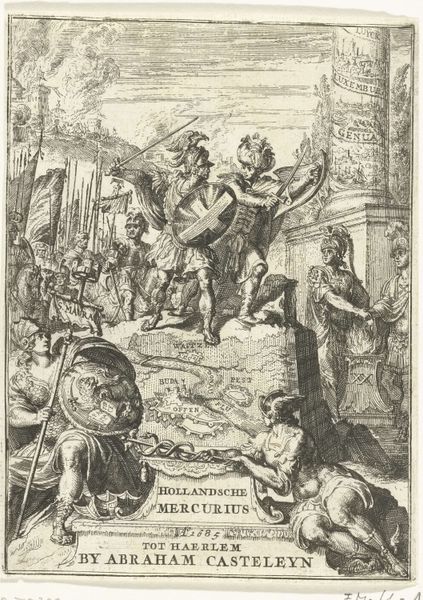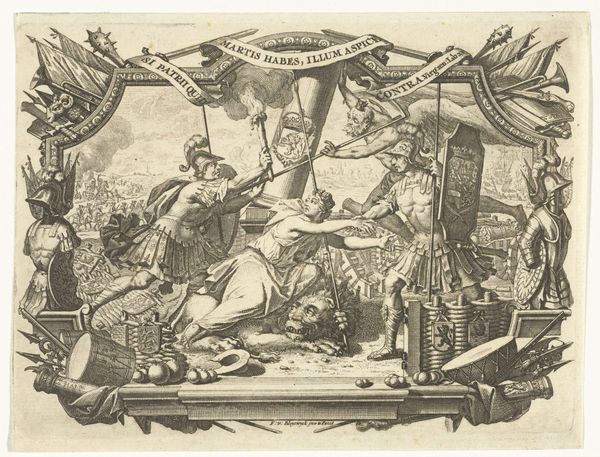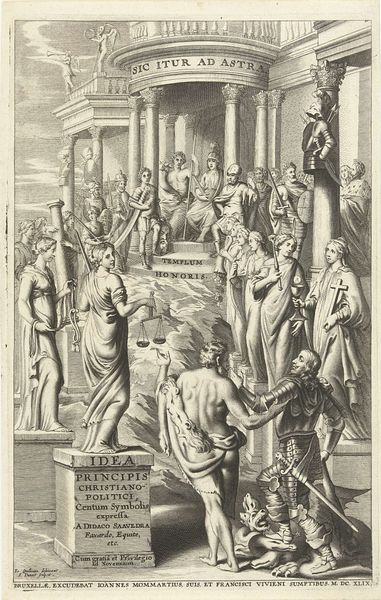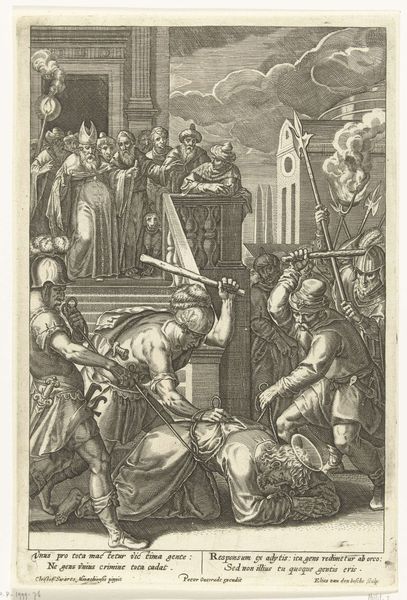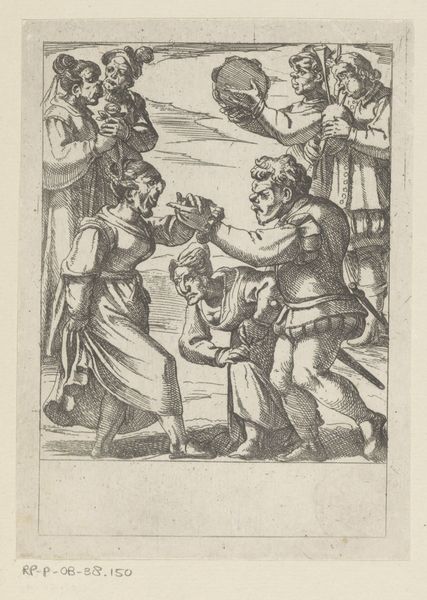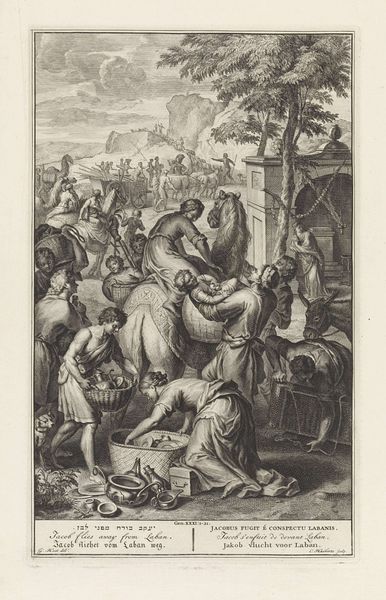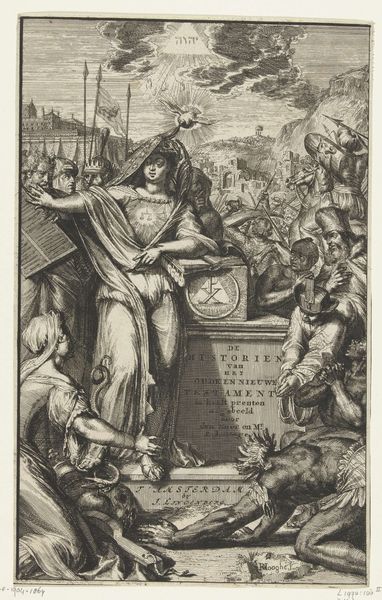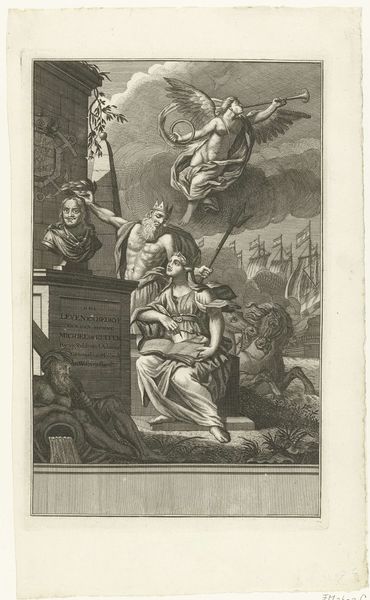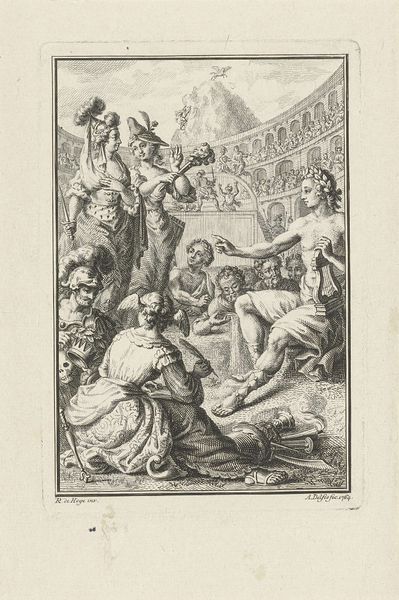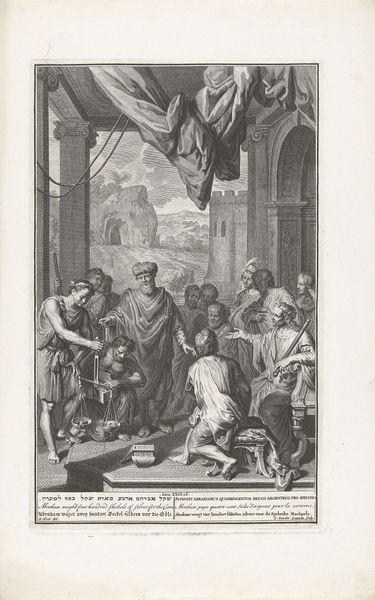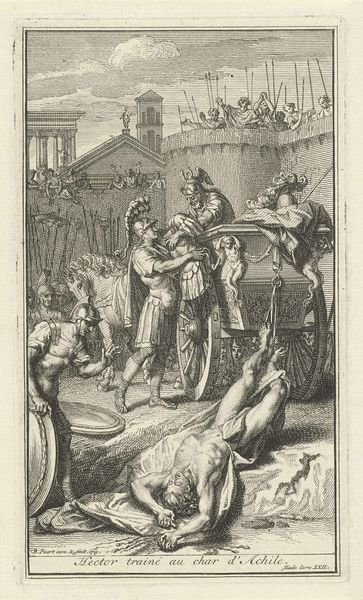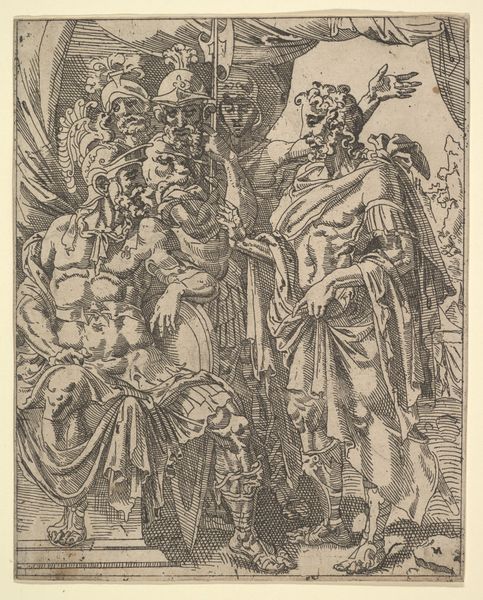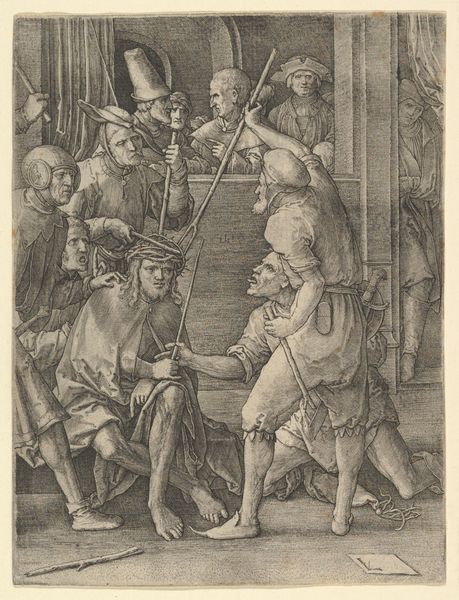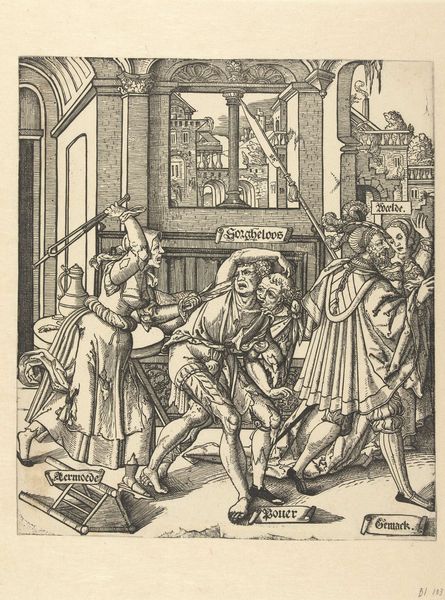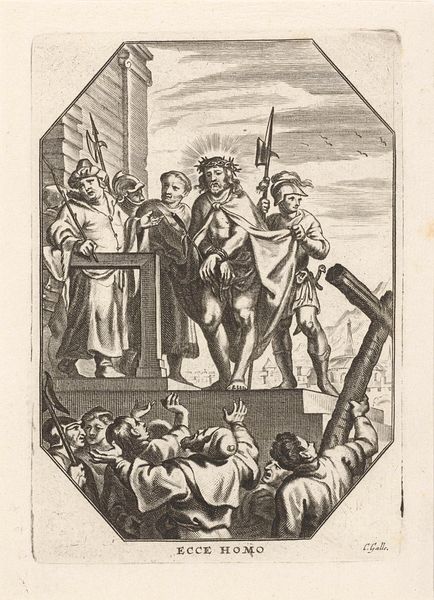
print, engraving
#
narrative-art
#
baroque
# print
#
figuration
#
history-painting
#
academic-art
#
engraving
Dimensions: width 100 mm, height 88 mm
Copyright: Rijks Museum: Open Domain
Editor: This engraving is "Offer van Polyxena" by Jan Goeree, from 1710. It looks like it depicts a classical scene, quite dramatic! What can you tell me about the making of such prints and how it connects with the art world at the time? Curator: Let's consider Goeree's method. He created this image through engraving, a labor-intensive process involving carving lines into a metal plate, inking it, and pressing it onto paper. The reproducibility of prints democratized access to imagery but also made it a commodity for consumption. Think about how many hands would have been involved in the making and selling process! How does this image reflect on value creation within its historical economy? Editor: I hadn't thought about all the hands involved in producing and selling it. So, engraving served both artistic and commercial functions. How might the materiality of this work—the lines etched into the metal and pressed onto the paper—influence our reading of its dramatic subject matter? Curator: Precisely. Look at the very lines themselves; their density creates areas of dark and light, almost theatrical. That intensity certainly adds drama, wouldn't you agree? Also, consider that the material permanence offered by engraving gives a sense of gravity and timelessness. This technique reinforces the historical painting genre, but it also reduces it to something affordable. Doesn't it change our perception? Editor: Absolutely. So, in a way, the artist's choice of engraving shaped how audiences engaged with this story, turning something "high art" into something that had greater reach? Curator: Yes, exactly. Through labor and mass production, classical themes reached a wider audience. Editor: That's such an insightful way to consider the cultural impact of this piece, thinking about the materiality and accessibility! Curator: Glad you see it that way. It's essential to consider these objects not just as isolated works, but as nodes within vast networks of production, consumption, and meaning-making.
Comments
No comments
Be the first to comment and join the conversation on the ultimate creative platform.
